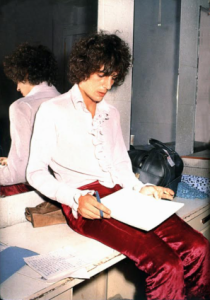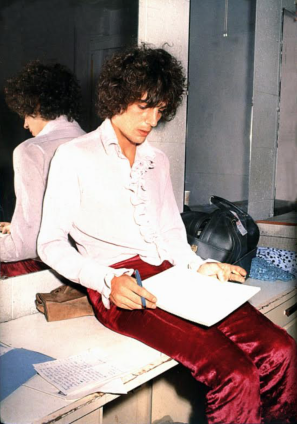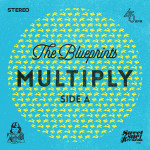 On January 6th, Syd Barrett would have turned 70. The same day saw the launch of a new official website, www.sydbarrett.com, featuring biographical information on Syd, born Roger, alongside photographs, art and his music. This new archive is a treasure trove, including a number of pieces that were previously unavailable to the public. Hopefully, it will lead people to discover the genius behind the best period of Pink Floyd and songs such as ‘Octopus’ and ‘Dominoes‘.
On January 6th, Syd Barrett would have turned 70. The same day saw the launch of a new official website, www.sydbarrett.com, featuring biographical information on Syd, born Roger, alongside photographs, art and his music. This new archive is a treasure trove, including a number of pieces that were previously unavailable to the public. Hopefully, it will lead people to discover the genius behind the best period of Pink Floyd and songs such as ‘Octopus’ and ‘Dominoes‘.
Like all the best writers in rock ‘n’ roll, Syd’s work fits oddly in time. His early songs were innovative, yet looked back on childhood, attempting to fix memories in place. By his solo debut The Madcap Laughs, in 1970, his guitar playing ebbed with the emotions of the songs rather than regular rhythms. Later, having abandoned music, he returned to painting, in which he had trained at Camberwell School of Art. In his art he captured an eternal now, marking down what lay in front of him then often destroying or painting over the canvas. While he has influenced many musicians, including David Bowie, Robyn Hitchcock and the members of Blur, his work remains ripe for reinterpretation.
Syd’s nephew, Ian Barrett, has long been a go-between for fans curious about the former Pink Floyd singer. Ian is also the founder of Jurassic Jewellery, creating jewellery using amber, meteorites and fossils. You may find his work at www.jurassicjewellery.co.uk. He has been involved in the creation of the new website and kindly took the time to answer some questions about the project for God Is In The TV.
I must say, I feel a little uneasy discussing Roger. I know you’ve spoken before about the gap between the reality of his life outside the public eye and what many people expect. Also, I imagine the intrusions into his life must have been distressing for you all. However, I may not have come across his music and art but for the ‘Syd myth’. I’m interested in the motivations behind the website project. How do you feel projects, such as this and the exhibitions of his art, affect the public perception of Roger and his work?
I think the more of his art people can enjoy, the better. It gives a much more rounded impression of him as a man than the earlier, more caricatured ‘reclusive lunatic’ that was more commonly discussed. I am not old enough to be privy to his working career first hand, but instead, grew up in the strange position of reading stories of his supposed crazy behaviour and then visiting him regularly and having to assimilate this image with what I could see of the reality of his life. I am not trying to fudge the reality or claim that his life was one that was ‘totally traditional’. His life was never totally traditional. But neither was he the one-dimensional ‘tortured soul’ perpetuated in so many books and magazines in the 80s and 90s. Shattering this myth was one of the aims of our creating a website to show his life and inspiration, and in particular, his artwork – as that was a more important focus to him than the music, really. People can enjoy one or both of these art forms and take from it what they wish. I would never try and speak for him and have no idea what he would think about so many people viewing his art, but I would like to think he would be thrilled to know it gives people so much pleasure so long after his death.
The new website has been created with help from yourself and other relatives of Roger’s. May you tell me about how you shaped the project? How and when did the idea come about?
I think the project stemmed from a time a year or so ago when the younger members of our family were invited to take a more active role in the running of the estate. We attended meetings about Syd’s art and became more involved in how his career should be portrayed into the future. While there already was an official website, we felt it did not represent Syd and his life as best it could and talked about ways to create a new one. With his 70th birthday coming up, it seemed an appropriate and exciting date to launch the new site and give us all a focus.
Were you familiar with all the material before working on this project or have you learned anything about Roger as an artist from the other contributors?
We have always seen artwork around his house whenever we visited – and it was always his main interest in life, so it seemed natural. I for one have never been too concerned with interpreting his art in any great depth, but if others do then that is fantastic. The crux of his visual art is that it was never painted with any real desire to show it to others. If he had wanted to exhibit it I am sure he knew that this could have been arranged, but I don’t think this concerned him. He seemed happy simply with the process of creating the art, and the fact that he burned or painted over so many artworks would bear out my assumption that he was not interested in exhibiting them.
Some material on the website was previously unreleased. Which features and images were you most excited for people to see?
The main problem for us was finding enough new material. As a family, one thing we have come to appreciate over the years is that in general a Syd Barrett fan is a very keen fan. They tend to be obsessive in the extreme, and if there is a picture to be seen, they are likely to have seen it and saved it. We cannot claim to have a huge library of images that have never been seen. The brevity and shape of his career means that there are lots of images from the early part of his career and very few after that. You can’t expect a man who quit show business and never returned to then go on and pose for thousands of photographs. I think the most exciting thing for a fan is to view so many artworks they have probably never seen, and to do so without having to buy any books or magazines. Most devoted fans will already possess a lot of the material on the site, but it is great to introduce his work to lots of people who haven’t.
There are some paintings for which we can see Roger’s reference photos and early sketches. Most of all, these make me want to pick up a pen and make something myself. Looking at Roger’s use of improvisation and dislike of looking back on past achievements, to what extent do you believe he valued the finished pieces? Would you agree the process of creation held greater value for him?
As I’ve already said earlier, I don’t think he was remotely interested in the long-term ‘value’ of the pieces – especially commercially. He had no need or interest in selling them, nor, it would seem, in exhibiting them, so in that respect I think the only thing that can have interested him was the creation. Again, I can only surmise and would hate anyone to think I am speaking for him.
When choosing what to include, were you conscious of presenting his spontaneity?
To be honest, we are just looking to create a site that shows off his art and music to fans both old and new. We haven’t really made any artistic decisions about what to include or not. I would like to claim it was intricately themed and curated – but we don’t feel that sort of work is necessary. Maybe as the site develops and progresses we will take a more active hand in theming and arranging the work, but at the moment the family are just thrilled that it is giving so many people real pleasure!
Are there plans to add footage of live performances to capture the process of improvisation?
Live video is certainly one thing we are looking to include soon, but it is early days for the new site and we just haven’t had time to include it. Copyright clearance is always a necessary chore so it may take a while; but as soon as we find some suitable videos and a way to clear them and get them on the site, we will do.
What have you learned about Roger’s creative methodology from his surviving work?
I can’t claim to be an art critic and have never really analysed his art with any real distance. I think personally I enjoy his use of colour the most. There are certain pictures where the colours sing out from the canvas. There has often been a discussion of him having synaesthesia and there being an intrinsic link between his music and his painting. I can see the logic in this and it is certainly an intriguing possibility. The best place to go if you enjoy his visual art is the Barrett Art Book. This is an amazing record of all of Syd’s paintings, packed with analysis and history.
Most of all, what do you hope people take away from the site?
I think the real aim is for people to have a single reliable place to visit to get a rounded picture of Syd Barrett the man and artist. We are not interested in all the myths and legends surrounding his life and career – we just want people to enjoy the incredible music and art he created and to share the legacy with the generations to come.




